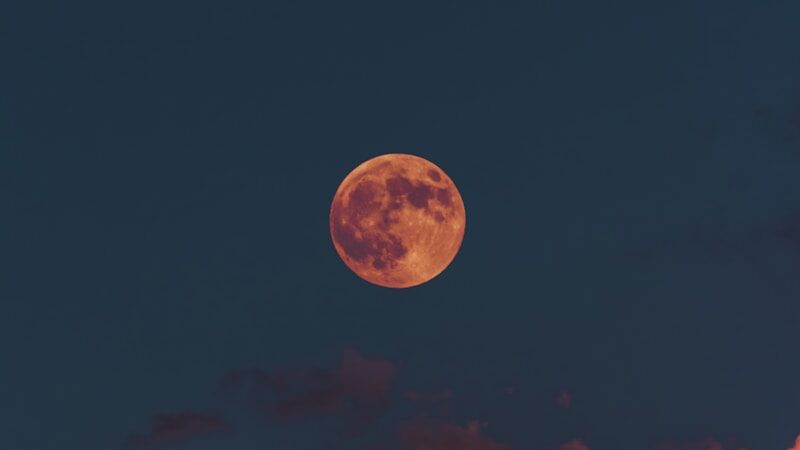There’s something magical about a Blood Moon—when the Moon turns an eerie shade of red, casting a surreal glow in the night sky. If you’ve never seen one, Thursday March 13 into Friday March 14 is your chance!
This rare total lunar eclipse will be visible across North and South America, parts of Europe, and Africa. Whether you’re an astronomy enthusiast or just love breathtaking night skies, we’ve got you covered with everything you need to know—including the best viewing times, locations, and photography tips.
And while Thursday night’s event is happening soon, if you’re serious about stargazing, investing in a quality telescope can make the next celestial event even more spectacular. While it won’t arrive in time for this eclipse, check out my Best Telescopes for Beginners & Experts guide so you’re fully prepared for the next astronomical wonder!
What is a Blood Moon?
A Blood Moon happens during a total lunar eclipse when the Earth moves directly between the Sun and the Moon, casting a shadow over the Moon. But instead of going completely dark, the Moon turns red due to a process called Rayleigh scattering—the same reason why sunsets and sunrises appear red.
The Earth’s atmosphere filters out blue light and lets longer red wavelengths pass through, painting the Moon in deep shades of crimson and orange. This gives it the eerie name: Blood Moon.
How Often Does a Blood Moon Happen?
- Total lunar eclipses occur about every 2.5 years, but not all of them result in a deep red Blood Moon.
- The next total lunar eclipse won’t happen again until 2028—so don’t miss this one!
When and Where to See the Blood Moon
🔭 Mark Your Calendar! The Blood Moon happens March 13-14, 2025.
Eclipse Timeline (Eastern Time – Check for Your Local Time Zone)
- 🌑 Penumbral Eclipse Begins: 11:57 PM
- 🌓 Partial Eclipse Begins: 1:09 AM
- 🔴 Total Eclipse (Blood Moon) Begins: 2:26 AM
- 🔴 Peak Total Eclipse (Best Viewing Time!): 2:58 AM
- 🌓 Partial Eclipse Ends: 4:47 AM
- 🌑 Penumbral Eclipse Ends: 6:00 AM
Best Places to Watch:
📍 Anywhere with a clear sky! But for the best experience, avoid city lights and head to:
✅ National parks or rural areas for minimal light pollution.
✅ High elevations (mountains, hills) for unobstructed views.
✅ Observatories or astronomy events—many host public viewings with telescopes!
⛅ Check the weather forecast before heading out. Cloudy skies? No worries—you can watch live streams from NASA, TimeandDate.com, and major observatories.
How to Capture the Blood Moon: Photography Tips
Want to snap an epic photo of the Blood Moon? Follow these simple tips for the best shots:
1. Use the Right Equipment
✔ Camera: A DSLR or mirrorless camera works best, but even newer smartphones can capture great shots!
✔ Lens: A 200mm+ telephoto lens helps zoom in on the Moon’s details.
✔ Tripod: Keeps your camera stable—essential for clear, sharp images.
2. Adjust Your Camera Settings
📷 ISO: 100–400 (keeps image quality sharp).
⏳ Shutter Speed: 1/125 – 1/250 seconds (prevents overexposure).
🔆 Aperture: f/4 – f/8 (lets in enough light while keeping focus).
3. Frame Your Shot Creatively
📌 Include landscapes, trees, or buildings for a dramatic composition.
🌌 Capture the moonrise or eclipse phases to tell a story.
📲 Use a Moon-tracking app (like Stellarium or PhotoPills) to plan your shot.
Blood Moon Myths & Cultural Significance
The Blood Moon has fascinated civilizations for centuries. Some cultures saw it as a sign of transformation, while others feared it as a bad omen. Here are a few cool legends:
- Ancient Inca – Believed a jaguar was attacking the Moon, and they’d bang drums to scare it away.
- Hindu Mythology – Linked lunar eclipses to spiritual cleansing and renewal.
- Modern Astrology – Some astrologers believe Blood Moons bring big life changes.
Regardless of beliefs, one thing is for sure—the Blood Moon is a breathtaking sight worth staying up for!
Final Thoughts: Don’t Miss This Stunning Lunar Event!
A Blood Moon is one of the most awe-inspiring celestial events you can witness with the naked eye—no special equipment needed!
So whether you’re:
✅ Watching from your backyard
✅ Heading to a dark sky park
✅ Capturing incredible photos
Make sure to set an alarm, grab a warm drink, and enjoy the show!

